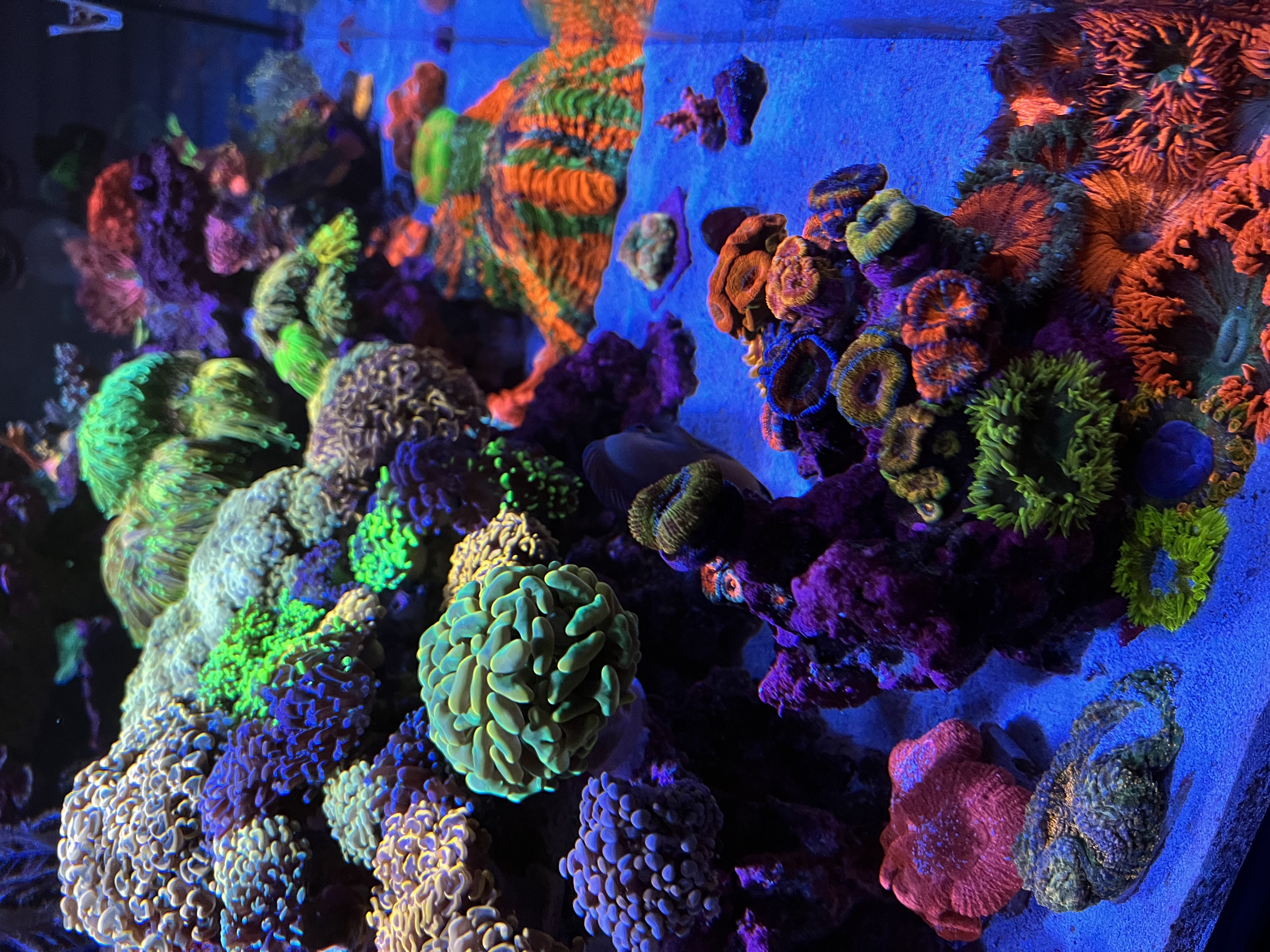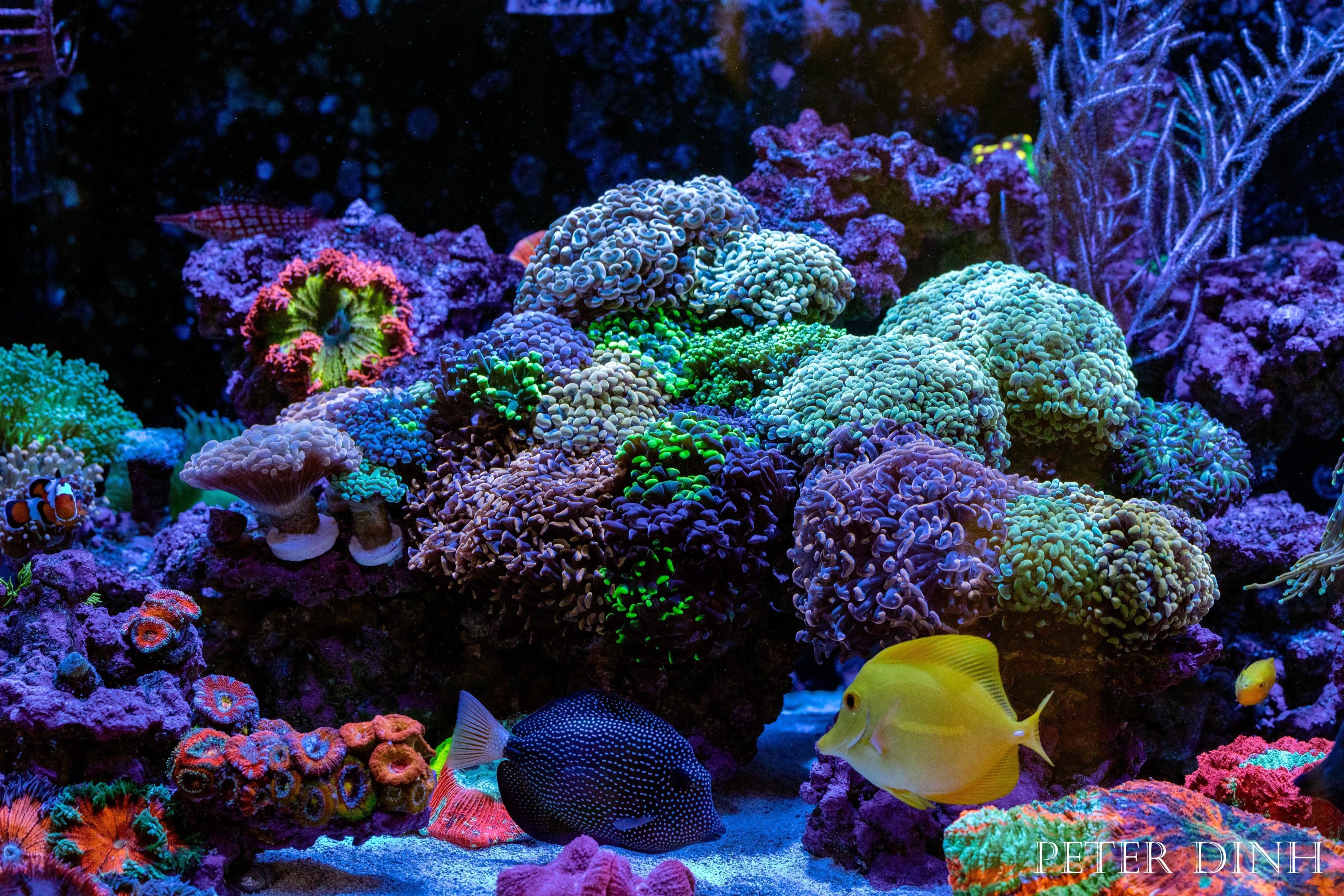Extreme Corals News and Updates
Top Coral Care Strategies for Maintaining Vibrant Reef Tanks
Unlocking the Secrets to Thriving Coral Reef Tanks
Delve into the intricate world of coral care within reef tanks, where maintaining optimal conditions is paramount for sustaining vibrant ecosystems. From understanding coral needs to preventing diseases and pests, this guide explores essential strategies for nurturing healthy corals and fostering long-term reef tank success.
by scott Shiles • February 28, 2024
Importance of coral care in reef tanks
Maintaining coral health in reef tanks is crucial to the overall well-being of the ecosystem. Healthy corals contribute to the vibrant colors and biodiversity of the reef, creating a visually appealing and thriving environment for marine life. Proper coral care involves ensuring the right water parameters, adequate lighting, and regular maintenance to prevent algae growth and disease. Regular water testing, balanced nutrient levels, and proper flow are essential for promoting coral growth and preventing degradation of the reef ecosystem. Moreover, maintaining optimal water quality and providing adequate calcium, magnesium, and alkalinity levels are crucial for the development and sustainability of coral reefs.

Understanding the needs of coral
Coral needs proper lighting, water flow, and stable water parameters to thrive. Different species of coral may have varying requirements for light and water flow. It's crucial to research the specific needs of the coral you plan to keep and ensure your tank meets those requirements. Additionally, maintaining stable water parameters, such as temperature, salinity, and nutrient levels, is essential for the health of coral in your reef tank.
Water quality and its impact on coral health
Maintaining good water quality is crucial for keeping your corals healthy. Factors such as salinity, temperature, pH, and nutrient levels affect the overall condition of your reef tank. Imbalanced water parameters can lead to stress in corals, making them more susceptible to diseases and algae growth. It's essential to regularly test and monitor your water parameters to ensure a stable and suitable environment for your corals to thrive.
Lighting and coral growth
When it comes to coral growth, the right lighting is essential. LED lights are commonly used for reef tanks because they provide a customizable spectrum and intensity. The light spectrum, particularly the blue and red light wavelengths, stimulates coral growth and pigmentation. Adjustable light timers are also important for replicating natural lighting conditions and promoting healthy coral growth. Additionally, it's essential to regularly clean the light fixtures and replace bulbs to ensure optimal lighting for your reef tank.
Proper coral placement and spacing
When setting up your reef tank, it's crucial to carefully consider the placement and spacing of your corals. Proper positioning ensures that each coral receives enough light and water flow for optimal health. Here are some key tips for proper coral placement and spacing:
- Ensure that corals have enough space between them to allow for growth without overcrowding.
- Place corals with similar lighting and flow preferences in close proximity to each other.
- Avoid placing aggressive corals next to more delicate ones to prevent them from competing for resources.
- Regularly monitor the growth and spread of corals to adjust their positioning as needed.
By following these strategies, you can create a balanced and vibrant reef tank that promotes the health and growth of your corals.
Coral feeding and supplements
Coral feeding and supplements are essential for maintaining a healthy reef tank. Ensuring that your corals receive proper nutrition can help promote vibrant colors and overall health. It's important to provide a balanced diet for your corals, including feeding them with suitable coral foods and supplements to support their growth and vitality. Phytoplankton, zooplankton, and coral-specific liquid foods are commonly used to supplement the diet of corals and promote their well-being. Additionally, providing essential nutrients such as calcium, magnesium, and strontium through supplements can contribute to the overall health and sustainability of your coral reef ecosystem.
Monitoring and maintaining water parameters
To ensure your coral thrives in your reef tank, it's crucial to keep a close eye on the water parameters. Regularly monitor the levels of ammonia, nitrite, nitrate, pH, alkalinity, and calcium. These parameters directly impact the health of your corals and the overall balance of your tank. Use high-quality testing kits to measure these levels and make adjustments as needed to maintain an optimal environment for your reef inhabitants.
Preventing coral diseases and pests
Preventing coral diseases and pests is crucial for maintaining a healthy reef tank. Here are some strategies to keep your corals safe:
- Quarantine new corals before adding them to your main tank to prevent introducing diseases or pests.
- Regularly inspect your corals for signs of disease or pests, such as discoloration, tissue damage, or unusual growths.
- Maintain stable water parameters, including proper salinity, temperature, and nutrient levels, to support the health of your corals and reduce the risk of diseases.
- Practice good tank hygiene by cleaning and maintaining your equipment, such as pumps, filters, and protein skimmers, to prevent the buildup of harmful bacteria or pests.
- Avoid overfeeding and maintain a clean, well-balanced aquarium environment to minimize the risk of pests and diseases taking hold.
By implementing these strategies, you can help prevent coral diseases and pests, and ensure the vibrancy and health of your reef tank.
Fragging and propagation techniques
Fragging is the method of propagating coral by cutting a piece of a healthy coral and letting it grow into a new individual. It's a way to expand and maintain a vibrant reef tank. To frag a coral, you’ll need to:
- Prepare the Supplies: Gather fragging tools such as a fragging saw, bone cutters, or a sharp scalpel, and ensure you have frag plugs or tiles ready for the cut pieces.
- Select the Coral: Choose a healthy coral with good growth and vibrant color.
- Cutting Technique: Carefully cut a piece of the coral, making sure to avoid damaging the parent coral or causing stress.
- Placement: Attach the cut piece to a frag plug or tile with glue or putty, and then place it in a sturdy, low-flow area of the tank.
By fragging coral, you can support the population of your reef tank and distribute corals to other aquarists, while also promoting the health and diversity of your tank.
Tips for long-term vibrant reef tank success
Whether you are just starting with your first reef tank or an experienced aquarist, here are some proven strategies for maintaining a vibrant and healthy reef tank over the long term. Consistent water quality is vital for the success of your reef tank. Regular water testing and maintenance will help ensure that your tank's inhabitants are thriving. Choosing the right lighting is crucial for the health of your corals. Proper lighting encourages the growth of colorful and healthy corals. Creating a stable environment for your reef tank is essential. Any quick changes in water temperature or chemistry can negatively impact your tank's inhabitants. Regular maintenance and monitoring will ensure that your reef tank remains vibrant and attractive for years to come.

